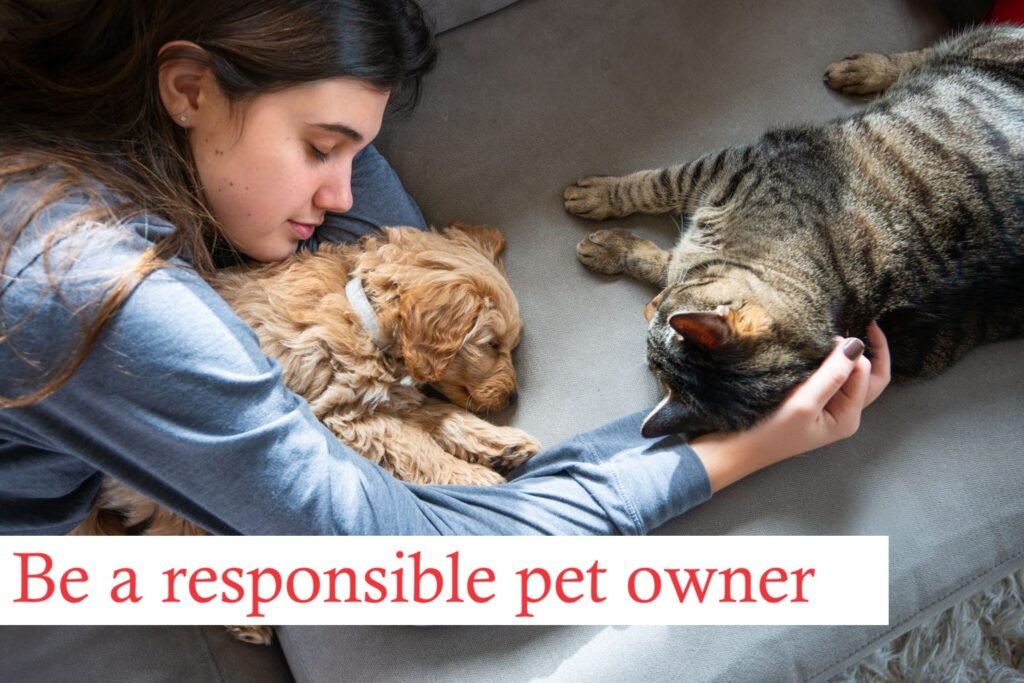Getting a new pet is exciting, but it also means taking care of its health. Pet insurance is helpful because it gives you financial protection and peace of mind. It’s like health insurance for people, covering vet bills for accidents, illnesses, and sometimes regular check-ups. Learning about the different types of plans and what to look for can help new pet owners make smart choices about their pet’s health.
In this guide, you’ll discover why pet insurance is important and learn about its benefits. We’ll discuss the types of coverage it offers and provide tips on choosing the right plan for your pet. This way, you can ensure your furry friend gets the care they need without worrying about unexpected vet bills.
What is Pet Insurance?
Pet insurance is like health insurance for pets. When your pet is sick or injured, it helps pay for vet bills. It covers things like treatments, surgeries, and medicine. Some plans also cover check-ups to keep your pet healthy. Pet insurance means you won’t have to worry about big vet bills. It lets you focus on taking care of your pet without stressing about the cost of medical care.
Types of Insurance Plans
Pet insurance helps pay vet bills and gives pet owners peace of mind. There are different types of plans to choose from:
1- Accident-Only Plans
These cover the costs of unexpected incidents such as broken bones or swallowing something harmful. They are cheaper and better for young, healthy pets or budget-conscious owners. In 2022, approximately 5% of pet insurance policies in the United States were accident-only plans.
2- Comprehensive Plans
It is also called accident and illness plans. It covers many issues, including accidents, illnesses, and genetic conditions. After a deductible, it pays up to 90% of the pet’s vet bills. In 2022, approximately 81% of US pet insurance policies were comprehensive plans.
3- Wellness Plans
Wellness Plans focus on preventive care, such as check-ups, vaccinations, and dental cleanings. They don’t replace accident or illness insurance but help keep pets healthy. About 14% of pet owners choose wellness plans and often add them to other insurance.
4- Lifetime Plans
These provide ongoing coverage for chronic conditions throughout a pet’s life, especially for breeds prone to genetic issues. They renew each year and cover long-term illnesses. Lifetime plans are more common in the UK and Europe, with fewer than 10% of US pet owners choosing this type of coverage.
Choosing the right pet insurance plan depends on your pet’s needs and budget. Knowing the different types of plans can help you pick the best one for keeping your pet healthy.
Key Benefits of Pet Insurance
Pet insurance helps pet owners cover vet bills, making it easier to care for their pets. Here are some important benefits:
-
Financial Protection:
Pet insurance pays for vet visits due to accidents, illnesses, and routine care. Vet bills can be costly, with emergency visits ranging from $800 to $1,500 and surgeries costing over $5,000. Pet insurance helps by reimbursing a large part of these expenses, easing the financial burden on owners.
-
Access to Quality Care:
Having pet insurance means pets can receive top-notch care. It encourages owners to take their pets for regular check-ups and vaccinations. Insured pets are more likely to stay healthy and live longer.
-
Peace of Mind:
Pet insurance gives owners peace of mind. They don’t have to worry about vet costs and can focus on their pets’ health and happiness. A 2022 survey found that 70% of pet owners felt less stressed about vet bills because they had pet insurance.
-
Extra Benefits:
Certain pet insurance plans provide additional benefits such as coverage for alternative therapies, behavior treatments, and boarding fees in the event of hospitalization for the pet owner. These extras help owners provide even better care for their pets.
Understanding these benefits can help pet owners decide if pet insurance suits their pets’ well-being.
Factors to Consider When Choosing Pet Insurance
Choosing the right pet insurance is important to ensure your pet gets the best care without causing financial stress. Here are some essential things to consider:
-
Coverage Options:
Pet insurance plans cover different things. Some only cover accidents, while others include illnesses, hereditary conditions, and routine care like vaccinations and dental cleanings. Most people prefer comprehensive plans because they cover many issues. Make sure the plan you choose matches your pet’s needs.
-
Cost and Affordability:
Pet insurance costs depend on your pet’s age, breed, and where you live. Dog insurance usually costs between $25 and $70 per month, while cat insurance costs between $10 and $40 per month. Find a plan that fits your budget and provides adequate coverage. Check deductibles, co-pays, and reimbursement levels to understand the total cost.
-
Exclusions and Limitations:
It’s important to know what your policy doesn’t cover. Standard exclusions include pre-existing conditions and some hereditary problems. For instance, some plans don’t cover hip issues or dental diseases. Read the policy details carefully to avoid surprises when you make a claim.
-
Policy Flexibility:
A suitable pet insurance plan should be flexible. Look for options to customize coverage, adjust deductibles, and add wellness plans. Some insurers offer discounts if you have more than one pet.
Considering these factors can help you select a plan that meets your pet’s health requirements and your budget.
Common Myths About Pet Insurance
There are myths about pet insurance that need to be clarified for new pet owners. Let’s clear up some common ones.
1- Pet Insurance Costs Too Much:
Some people think pet insurance is expensive, but different plans are available. Basic plans start at about $20 per month. It can save you money on vet bills and give you peace of mind in the long run.
2- Only Sick or Old Pets Need Insurance:
Even young, healthy pets can benefit from insurance. If they have accidents or get sick later on, insurance helps. Getting insurance early can mean lower costs and coverage for unexpected health problems.
3- Filing Claims is Hard:
Most insurance companies make it simple. They have online forms and process claims quickly, and digital platforms make it simple to submit claims.
4- Pet Insurance Doesn’t Cover Routine Care:
While basic plans might not cover routine care, comprehensive plans often include wellness options. These can pay for vaccinations, flea prevention, and yearly check-ups. Pet insurance is an excellent way to invest in your pet’s health.
Real-Life Scenarios Where Pet Insurance Makes a Difference
Here are real-life examples showing how pet insurance can help:
- Emergency Situations: Imagine that your dog eats a toy and requires urgent surgery. Without insurance, this could cost a lot. However, insurance covers most of the cost, alleviating your concern and expediting your dog’s treatment.
- Chronic Conditions: If your cat has diabetes and needs ongoing treatment, it can be expensive. Pet insurance covers many of these costs, ensuring your cat gets the care it needs without you spending too much.
- Routine Care: Things like yearly vaccinations and check-ups can add up. Some pet insurance plans pay for these routine expenses, making keeping your pet healthy with regular care easier.
FAQs About Pet Insurance
Here are some common questions about pet insurance to help you understand it better:
What does pet insurance cover?
Pet insurance usually covers accidents, illnesses, surgeries, and medications. Some plans also include routine and preventive care for comprehensive coverage.
How much does pet insurance cost?
The cost varies depending on your pet’s age, breed, and health. Monthly premiums typically range from $20 to $50. Compare different plans to find the best value for your needs.
Can I Get Pet Insurance for Older Pets?
Yes, you can, but the premiums may be higher, and there may be coverage limits. It’s better to insure pets when they’re young and healthy for lower premiums and broader coverage options.
How Do I Make a Claim?
Most insurers have a simple process. You fill out a claim form and submit vet receipts. They reimburse you based on your policy terms, making covering your pet’s expenses simple.
Conclusion
Pet insurance is smart for new pet owners because it provides financial protection, access to excellent healthcare, and peace of mind. Understanding the different types of plans, clearing up common myths, and finding answers to common questions can help you choose wisely. This ensures your pet stays healthy and happy.
According to one pet owner,
“Pet insurance lets me focus on my pet’s recovery instead of worrying about the cost.“
Investing in pet insurance allows you to enjoy your pet’s companionship without worrying about unexpected medical expenses. It’s about being ready for potential health issues, enabling you to provide your pet with the best care possible.



